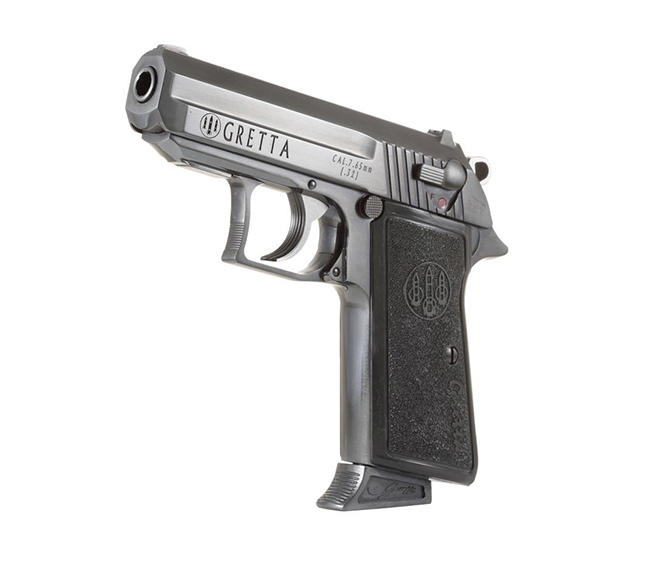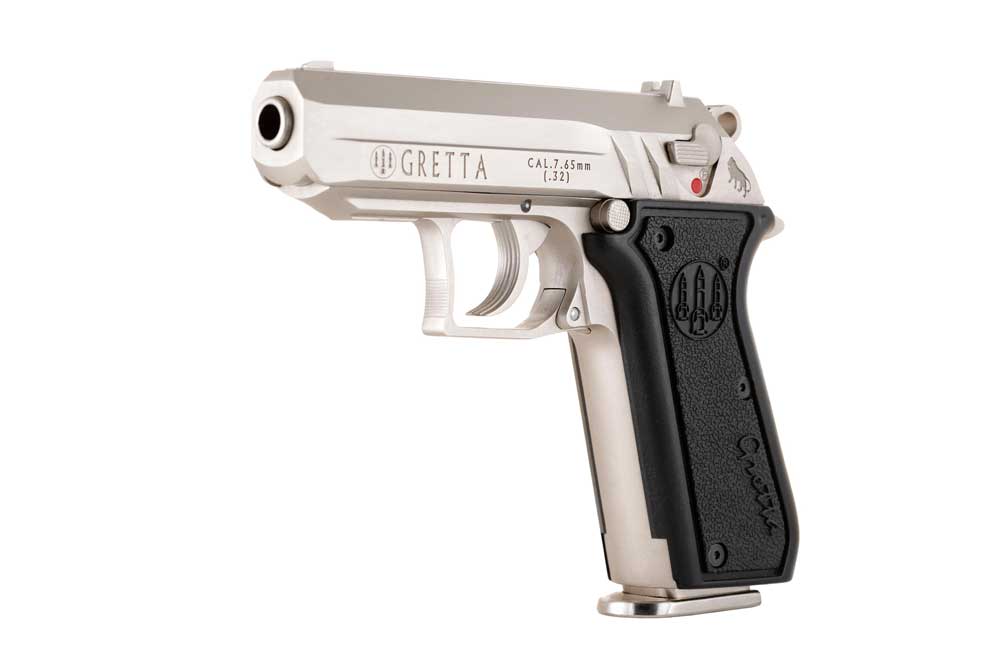Understanding the Effectiveness of .32 Caliber Pistols: Debunking Myths and Evaluating Performance

Introduction to .32 Caliber Pistols
.32 caliber pistols have been a popular choice for firearm enthusiasts and concealed carry holders for many years. To truly understand their effectiveness, it is important to delve into the history, ballistics, real-world applications, and debunk any myths associated with this caliber. By exploring these aspects, we can gain a comprehensive understanding of the power and limitations of .32 caliber pistols.

A Brief Overview of .32 Caliber Pistols
.32 caliber pistols, also known as .32 ACP (Automatic Colt Pistol) or 7.65mm Browning, gained prominence in the early 20th century and have since remained a well-regarded caliber choice for various purposes. They are compact, lightweight, and offer manageable recoil, making them suitable for concealed carry and self-defense.
Historical Context and Usage
.32 caliber pistols have a rich history, starting with their introduction by famous firearm designer John Browning in 1899. They gained popularity in Europe and the United States during the early 1900s, where they were widely used by civilians, law enforcement, and even military personnel. The compact size and reliability of .32 caliber pistols made them a trusted companion for personal protection in a time where larger firearms were less practical.
Importance of Understanding their Power and Limitations
While .32 caliber pistols have their merits, it is crucial to recognize their power and limitations. By thoroughly evaluating the ballistics, real-world applications, and debunking common misconceptions, responsible gun owners can make informed decisions when choosing their self-defense or carry firearms. Let’s explore these areas in detail.
Exploring the Ballistics of .32 Caliber Pistols
Understanding the ballistics of .32 caliber pistols is essential to evaluate their performance accurately. Let’s delve into the significance of bullet caliber, comparing the advantages and disadvantages, and analyzing the energy transfer and projectile velocity.
Understanding Bullet Caliber and its Significance
The term “caliber” refers to the diameter of a bullet or the internal diameter of a firearm’s barrel. In the case of .32 caliber, it indicates that the bullet measures approximately .32 inches in diameter. While caliber alone cannot dictate a bullet’s performance, it plays a crucial role in determining factors such as recoil, magazine capacity, and terminal ballistics.
Comparing .32 Caliber with Other Common Handgun Calibers
When comparing .32 caliber with other common handgun calibers, such as 9mm, .40 S&W, and .45 ACP, it is evident that .32 caliber offers reduced recoil and smaller magazine capacity. However, it compensates with better concealability, lightweight design, and ease of handling. The choice between calibers ultimately depends on an individual’s preferences, skill level, and intended use.
Analyzing the Advantages and Disadvantages of .32 Caliber
The advantages of .32 caliber pistols lie in their concealability and reduced recoil, making them ideal for those who prioritize comfort and ease of use. However, the trade-off is a slightly reduced stopping power compared to larger calibers. It is important to consider personal preferences, skill level, and intended use to determine whether .32 caliber is the right choice.
Examining the Energy Transfer
Understanding the energy transfer of .32 caliber bullets is essential to evaluate their stopping power. Let’s explore the concept of kinetic energy and analyze how .32 caliber performs in comparison to other calibers.
Kinetic Energy and its Relation to Bullet Effectiveness
Kinetic energy refers to the energy a bullet possesses due to its motion. It plays a crucial role in determining a bullet’s effectiveness in stopping a threat. While .32 caliber bullets may have less kinetic energy compared to larger calibers, proper shot placement and bullet design can compensate for this difference.
Evaluating the Energy Transfer of .32 Caliber Bullets
The energy transfer of .32 caliber bullets relies on bullet velocity and construction. While .32 caliber ammunition may have lower muzzle energy compared to larger calibers, modern advancements in bullet design have improved their terminal ballistics. It is crucial to choose quality ammunition that harnesses the full potential of .32 caliber pistols.
Comparing the Stopping Power with Other Calibers
Assessing Projectile Velocity and Penetration
Projectile velocity and penetration capabilities are vital considerations when evaluating the performance of .32 caliber pistols. Let’s explore the role of bullet speed and penetration capabilities, along with the effect of bullet design on performance.
The Role of Bullet Speed in Terminal Performance
Bullet speed, also known as muzzle velocity, contributes to the terminal performance of a bullet. While .32 caliber pistols may have a lower muzzle velocity compared to larger calibers, they can still achieve adequate velocity to ensure reliable penetration and expansion.
Stopping power cannot be solely attributed to caliber size. Shot placement, penetration, and bullet expansion also play crucial roles. While .32 caliber pistols may not offer the same stopping power as larger calibers, they can still be effective in self-defense situations when used properly. Training, practice, and selecting appropriate ammunition are key factors in maximizing the stopping power of a .32 caliber pistol.
Penetration Capabilities of .32 Caliber Bullets
Penetration is a crucial factor in assessing a bullet’s effectiveness. .32 caliber bullets typically provide sufficient penetration to reach vital organs and stop a threat. Adequate penetration, combined with shot placement, remains essential in achieving stopping power.
Examining the Effect of Bullet Design on Performance
Bullet design significantly impacts terminal performance. Modern hollow-point ammunition, designed specifically for self-defense purposes, is available for .32 caliber pistols. These bullets are engineered to expand upon impact, transferring energy to the target and maximizing stopping power. When selecting ammunition, it is crucial to consider bullet design to ensure optimal performance.

Real-World Effectiveness of .32 Caliber Pistols
Understanding the real-world effectiveness of .32 caliber pistols is crucial for individuals considering them for self-defense purposes. Let’s consider their suitability for personal protection, analyze law enforcement usage, and explore practical applications beyond self-defense.
Considerations for Self-Defense Purposes
When evaluating the suitability of .32 caliber for personal protection, several factors come into play. These include the individual’s training, comfort level, and the specific self-defense scenario. While .32 caliber pistols may not offer the same stopping power as larger calibers, they can still effectively deter or stop a threat when used properly.
Analysis of Law Enforcement Use
While .32 caliber pistols are not as prevalent in law enforcement agencies as larger calibers, they still have their place in certain contexts. Some officers may choose to carry .32 caliber pistols as backup weapons or for deep concealment purposes. The decision to carry a .32 caliber pistol in law enforcement depends on individual preferences, department policies, and specific operational requirements.
Practical Applications Beyond Self-Defense
Aside from their use in self-defense scenarios, .32 caliber pistols have other practical applications. Their compact size and reduced recoil make them suitable for concealed carry purposes. Additionally, some shooting sports and competitions have divisions that allow the use of .32 caliber pistols, providing enthusiasts with opportunities to showcase their skills and enjoy the sport.
Debunking Myths and Addressing Concerns
Now let’s dispel common misconceptions and clarify concerns surrounding .32 caliber pistols. By addressing issues related to stopping power, reliability, accuracy, and safety, we can paint a clearer picture of their capabilities.
Dispelling Overestimations of Stopping Power
One common myth surrounding .32 caliber handguns is their perceived lack of stopping power. While it is true that larger calibers may offer more immediate stopping power, shot placement remains paramount. A well-placed shot with a .32 caliber pistol can stop an assailant effectively. It is important to focus on accuracy and shot placement rather than solely relying on caliber size.
Addressing Reliability and Accuracy Concerns
Reliability and accuracy are critical aspects of any firearm, including .32 caliber pistols. With proper maintenance, quality ammunition, and regular practice, .32 caliber pistols can be reliable firearms. Accurate shooting with a .32 caliber pistol can be achieved through mastering fundamentals, adjusting grip and stance to suit individual preferences, and ensuring consistent practice.
Safety Considerations and Recoil Management
Like any firearm, safety is of utmost importance when handling a .32 caliber pistol. Basic firearm safety rules must be followed at all times to prevent accidents. Recoil management can be addressed through proper grip technique, ensuring a firm hold on the firearm and employing proper shooting fundamentals. While .32 caliber pistols may have less recoil compared to larger calibers, it is still essential to maintain control and follow safe handling practices.
Summary and FAQs
Summary of the Findings and Key Points Discussed
To summarize our findings, .32 caliber pistols offer a compact and lightweight option for self-defense and concealed carry. While smaller in size compared to larger calibers, they can still be effective when used properly. Shot placement, bullet design, and quality ammunition are critical factors in maximizing the stopping power of .32 caliber pistols.
Frequently Asked Questions regarding .32 Caliber Pistols
- Are .32 caliber pistols suitable for beginners?
- Yes, .32 caliber pistols can be suitable for beginners due to their reduced recoil and ease of handling. However, proper training and practice are essential to ensure proficiency and safety.
- Can .32 caliber handguns effectively stop an attacker?
- Yes, .32 caliber handguns can effectively stop an attacker when used with proper shot placement and quality ammunition. Shot placement remains crucial regardless of caliber size.
- What are the typical ranges and limitations of .32 caliber bullets?
- The effective range of .32 caliber bullets is generally limited to ranges of 25-50 yards. The limitations lie in their reduced muzzle energy and bullet flight characteristics compared to larger calibers.
- Is it legal to carry a .32 caliber pistol for self-defense?
- The legality of carrying a .32 caliber pistol for self-defense varies depending on the jurisdiction. It is essential to familiarize oneself with local laws and regulations regarding firearm ownership and concealed carry.
- How do .32 caliber pistols compare to other popular calibers for concealed carry?
- When compared to other popular calibers for concealed carry, such as 9mm, .40 S&W, and .45 ACP, .32 caliber pistols offer reduced recoil and better concealability. However, they come with a trade-off in stopping power and magazine capacity.
In conclusion, .32 caliber pistols offer a viable option for self-defense and concealed carry purposes. By understanding their ballistics, real-world applications, and addressing common concerns, responsible gun owners can make informed decisions when considering the effectiveness of .32 caliber pistols. Remember, shot placement, training, and practice remain paramount in maximizing the potential of any firearm, regardless of caliber size.

